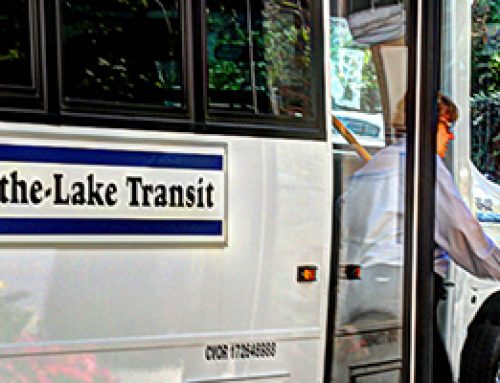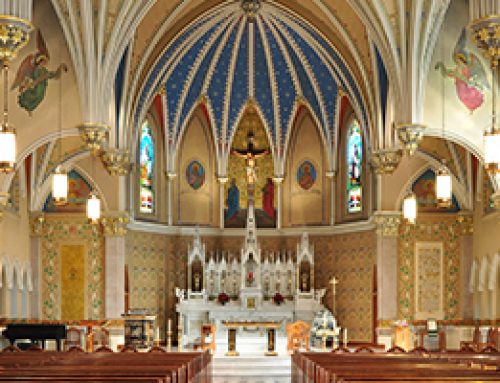Voter turnout refers to the number of eligible voters who cast a ballot in elections.
According to the Conference Board of Canada:
“One indicator commonly used to measure social cohesion is the proportion of individuals who participate in the political system. Determining the underlying influences of declining voter turnout rates can be difficult: A low turnout may be due to disillusionment or indifference, or even complacent satisfaction with the way the country is being governed. Conversely, a high turnout rate may reflect compulsory voting laws (as in Australia and Belgium) or coercion.
Voter turnout therefore may not always be a reliable indicator of social cohesion. The vast majority of analysts, however, consider a high voter turnout to be preferable to a low turnout because it means that the government will more likely reflect the interests of a larger share of the population.
Low voter turnout implies that the democratic system may not be reflecting the interests of all citizens. Voter turnout tends to be lowest among youth, those who are less educated, and those in lower income brackets.”
In terms of voter turnout in the last federal election, the Conference Board states:
- Canada scores a “C” and ranks 14th out of 17 peer countries.
- Only 53.8 per cent of adult Canadians voted in the 2011 federal election—the second-lowest turnout in history
- The decline in voter turnout in Canada may be due to lower participation of young people.

Source: The Conference Board of Canada
Retrieved From: http://www.conferenceboard.ca/hcp/details/society/voter-turnout.aspx
Voter Turnout in the 2011 Canadian Election
The following information is compiled by Andrew Heard, Associate Professor, Political Science Department, Simon Fraser University.
“The 2011 federal election saw a rise in voter turnout compared to the 2008 elections, at 61.1%. This rate may rise modestly as the initial figures do not include some special ballot votes. The 2011 turnout marked an improvement over the participation rate seen in 2008 (58.8%).”

Historical Voter Turnout in Canadian Federal Elections & Referenda, 1867-2011

Source: Andrew Heard, Associate Professor, Simon Fraser University
Retrieved From: http://www.sfu.ca/~aheard/elections/historical-turnout.html
Charts from Elections Canada for the 41st General Election – Poll-by-Poll Results
Information at the following links provides the total number of votes poll-by-poll for each electoral district in Niagara, and the total number of votes per district.
Ontario Election 2014 Voter Turnout in Niagara
Policy Brief #20 ‘Canadians (not) at the polls: a local, provincial and national story, Niagara Votes Ontario Election 2014’, released in May, 2014 by the Niagara Community Observatory at Brock University, in advance of the spring 2014 Ontario Election, states:
“A substantial and growing number of Niagara residents, as with citizens in other parts of Ontario and Canada, are tuning out of electoral politics. In 1999, 58 per cent of eligible voters province-wide cast a ballot in the Ontario provincial election. By the 2011 provincial election, the turnout rate had plummeted to just 48 per cent (see Figure 1). Provincial election turnout in most Niagara ridings also declined over that same period, although some ridings have fared better than others.
While turnout in the Niagara Falls and St. Catharines electoral districts is similar to the provincial average, voting rates in the former ridings of Erie-Lincoln and Niagara Centre were higher than the Ontario average. In 2007, the Erie-Lincoln and Niagara Centre electoral districts were abolished and redistributed into other ridings, including Niagara West-Glanbrook and Welland. While the boundaries of the abolished ridings do not correspond perfectly with those of the two new ridings, turnout in these newer ridings has remained higher than the provincial average (see Figure 1).”

Figure 1 All graphs are by Carol Phillips, PhD, with numbers collected via www.elections.on.ca/en-CA/Tools/PastResults.html
Further to this, NCO Policy Brief #20 asks “What can our government do?” to help improve voter turnout and participation rates in federal, provincial and municipal elections, and offers the following suggestions:
- Reform the electoral system. Voter turnout is five or six percentage points higher in countries that assign seats on a proportional or mixed proportional basis, where a political party’s representation more closely reflects its popular support. People are more inclined to vote when votes are converted into seats in a way that seems fairer to all parties.
- Introduce compulsory voting. On average, turnout in national elections is 13 per cent higher in countries where voting is compulsory and penalties are imposed for failure to comply.
- Introduce e-voting. Several municipalities in Ontario and Nova Scotia, as well as European nations, have used Internet voting in order to improve accessibility and voter turnout. However, there is no consistent evidence that e-voting boosts turnout.
- Improve formal civic education. Civic education can increase political knowledge, interest and the intent to participate in elections. Civics courses that integrate community service into the curriculum have a stronger impact on intended future political participation than more traditional, cognitively oriented civic education.
Source: Canadians (not) at the polls: a local, provincial and national story, Niagara Votes Ontario Election 2014, NCO Policy Brief #20, May 2014
Retrieved From: http://www.niagaraknowledgeexchange.com/resources-publications/canadians-not-at-the-polls-a-local-provincial-and-national-story/
Voter Turnout by Local Municipality in Niagara, Municipal Election, October, 2010
The Region of Niagara’s Sustainable Niagara Plan (2012) includes the following information about voter turnout in the 2010 Municipal Election.

Source: Sustainable Niagara, Niagara Region
Retrieved From: http://www.niagararegion.ca/government/planning/sustainability/
Niagara Votes Municipal Election 2014
A Policy Brief released by the Niagara Community Observatory at Brock University, in advance of the fall 2014 Municipal Election states:
“On a worldwide basis, there has been a great deal of concern about the declining level of voter turnout. Where does Niagara fit? It is difficult to generalize across four elections and 12 municipalities. Niagara certainly has a low level of voter turnout. However, there are some bright spots. Overall, the decline seems to have been arrested, and turnout levels have plateaued at a level comparable to other Ontario municipalities. Some local municipalities are bright spots in that they are consistently above the average for the region.”
Voter Turnout for Municipal Elections in Niagara Municipalities, 2000-2014*
|
2000 |
2003 |
2006 |
2010 |
2014 (unofficial) |
|
|
Fort Erie |
29.0 |
34.0 |
37.0 |
41.0 |
43.7 |
|
Grimsby |
46.1 |
47.3 |
44.8 |
39.0 |
42.4 |
|
Lincoln |
33.4 |
35.8 |
34.0 |
37.0 |
37.5 |
|
Niagara Falls |
40.3 |
47.8 |
41.3 |
43.0 |
36.7 |
|
NOTL |
N/A |
44.0 |
47.0 |
49.0 |
48.5 |
|
Pelham |
42.5 |
49.4 |
48.6 |
45.0 |
43.9 |
|
Port Colborne |
29.4 |
49.6 |
51.7 |
51.0 |
45.7 |
|
St Catharines |
27.0 |
29.7 |
40.7 |
31.0 |
34.3 |
|
Thorold |
47.6 |
39.0 |
40.7 |
40.0 |
36.9 |
|
Wainfleet |
43.6 |
33.6 |
43.4 |
49.0 |
52.5 |
|
Welland |
55.0 |
44.8 |
42.4 |
41.0 |
35.8 |
|
West Lincoln |
38.8 |
39.3 |
37.3 |
37.0 |
37.5 |
|
Average |
39.3 |
41.2 |
42.4 |
41.9 |
41.3 |
*Table based on NCO Policy Brief #21; 2014 figures added after October 27, 2014 municipal election. All figures courtesy of Niagara Region and/or municipal websites
Note: 4-year terms started in 2006; prior to that, the term was 3 years.
Source: NCO Policy Brief #21/September 2014; and October 27, 2014 election statistics retrieved from local municipalities in Niagara
Retrieved From: http://www.niagaraknowledgeexchange.com/resources-publications/voting-patterns-of-municipal-elections-in-niagara/








